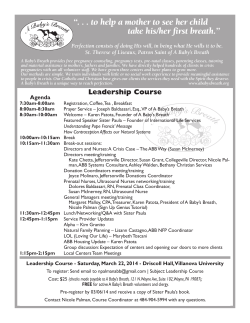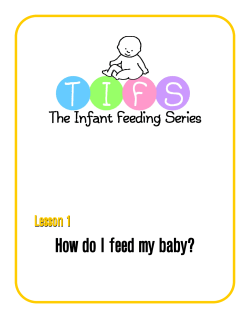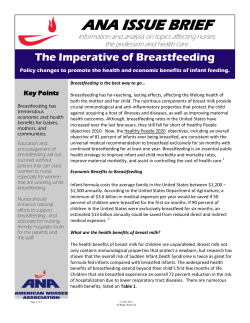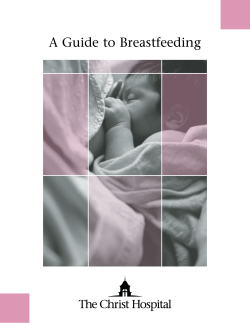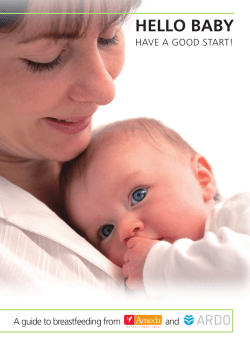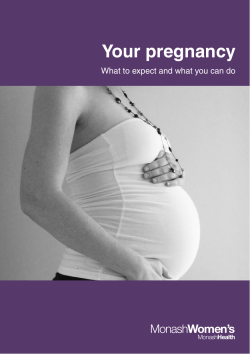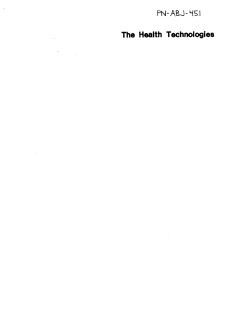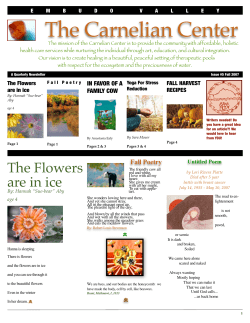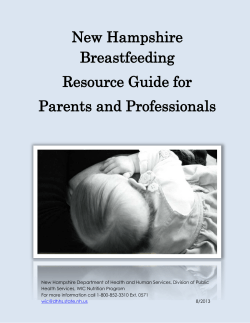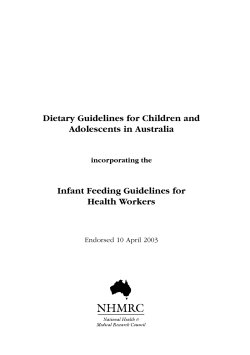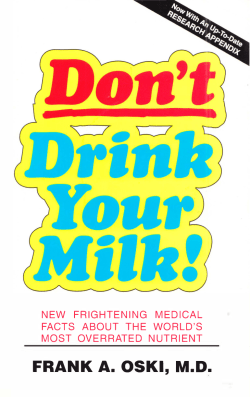
The Essential Guide to Breastfeeding in North East Essex 01255 202714
The Essential Guide to Breastfeeding in North East Essex 2012/13 designed by nature, made by mum Local Breastfeeding Support 01255 202714 Available 9am – 5pm Monday to Friday Out of hours please leave a message or call the National Breastfeeding Helpline: 0300 100 0212 Baby_B Logo.pdf C M Y CM MY CY CMY K 16/3/10 08:09:28 Please keep this handy with your maternity notes What’s in this issue... 4. North East Essex Community Breastfeeding Guidelines County commitment to families 5. Making Milk What happens when 6. Breastfeeding Positions Different ways to position your baby 8. How to spot when your baby wants to be fed What are your baby’s feeding cues 9. Good Attachment A picture guide to attaching my baby properly 10. Hand Expressing Why’s and how’s of hand expressing 11. Physical Challenges Troubleshooting common problems 12. Baby’s Nappies What is normal and when 13. Myths and Misconceptions Topping up, not enough milk, mastitis... 14. Myths and Misconceptions Returning to work 15. Breastfeeding and the family How family members can help 16. Special Circumstances Breastfeeding - Preterm or poorly baby, while pregnant, older children or children 17. Introducing other foods When to introduce other foods, recognising the signs and first foods your baby might try 18. Children’s Community Services The Children’s Community Services team 19. Local Breastfeeding Support Team How ‘Pink Ladies’ can support breastfeeding 20. Volunteers working with the Children’s Community Services & ‘Pink Ladies’ ‘Breastfeeding Champions’ are volunteer mums who have breastfed their baby 21. ‘Baby Beginnings’ Breastfeeding Support Groups 22. Support & Information National and Local Helplines and Websites 23. Breastfeeding friendly venues Breastfeeding friendly places across North East Essex The Real Baby Milk project wouldn’t be possible without the support and help from so many people and organisations Real Baby Milk was started by Cornish mum of three, Arwen Folkes, in 2005 after having a challenging time breastfeeding her first baby but succeeding due to the right information and support being available to her. The Essential Guide is designed to enable women to have easy access to the correct information and support that is available to them, giving them the best chance of succeeding too. Real Baby Milk is not for profit and run by mums, for mums. Many people and organisations have supported the project over the years and we are grateful to them all – but in particular: Helen Shanahan, Stephanie Heard, Mary O’Connell, Cornwall Council Family Services, Royal Cornwall Hospitals Trust and the volunteer mums across Cornwall all ready to support you and your baby. Hayley Hill – Breastfeeding lead for Anglian Community Enterprise CIC (ACE) has been a particular help putting together this guide and we’d like to say a big thank you to her for her patience and hard work bringing it all together. Baby_B Logo.pdf 16/3/10 08:09:28 Keep in touch with Children’s Community Services and the ‘Pink Ladies’. C M Y CM MY CY CMY K www.facebook.com/ BabyBeginningsBreastfeedingSupport Follow us on Twitter @ baby_beginnings Look out for further leaflets in our series of publications 2 realbabymilk.org Local Breastfeeding Support: 01255 202714 Skin to skin Keeps baby warm Calms baby’s heartbeat Reduces mum’s and baby’s stress levels Regulates baby’s breathing Helps with baby’s first feed Why breastfeed? Breastmilk is your way of providing your baby with all the nutrients he/she needs. Breastfeeding not only benefits your baby but you too. The World Health Organisation recommends exclusive breastfeeding for about the first 6 months and continued breastfeeding alongside other foods beyond your baby’s first birthday. This will give your baby the best start in life. However, any amount of your breastmilk will always be good for your baby’s health and wellbeing Helps protect you against P P P P P Breast cancer Ovarian cancer Osteoporosis (weak bones later in life) Obesity (helps you lose weight) Diabetes Helps protect your baby against P P P P P P P Severe diarrhoea and vomiting Chest infections Asthma Eczema Ear infections Obesity Diabetes Getting off to a good start... Early skin to skin contact with baby This is important for all babies for their health and well-being and tells your body it’s time to make milk! Early feed Baby receives vital colostrum, ‘nature’s first vaccine’ and your milk supply is kick started. Baby led feeding Let your baby lead the feeding, feed them whenever they ask. Frequent feeding will tell your body when and how much milk is needed Make sure your baby is well-attached Ask a midwife or visit a support group for help. Learn how milk is made - understand what your body is doing! realbabymilk.org 3 Parent’s Guide to the North East Essex Community Breastfeeding Guidelines (ACE 504) Staff support the right of all parents to make informed choices about infant feeding. All our staff will support you in your decisions. Breastfeeding is the healthiest way to feed your baby and we recognise the important benefits which breastfeeding provides for both you and your child. We therefore encourage you to breastfeed your baby. Baby_B Logo.pdf 16/3/10 08:09:28 C M Y CM MY CY CMY K How we will help mothers to breastfeed successfully All staff have been specially trained to help you breastfeed your baby. During your pregnancy, you will be able to discuss breastfeeding individually with a midwife, health visitor or breastfeeding supporter who will answer any questions you may have. A midwife and breastfeeding supporter will be available to explain how to put your baby to the breast and help with feeds in the early days. A health visitor will provide support later on. A midwife will show you how to express your breastmilk before discharge home from hospital and will give you written information about this. A health visitor and breastfeeding supporter will discuss hand expression. We recommend you hold your baby against your skin as soon as possible after birth and keep him or her near you whenever you can so that you can get to know each other. We will give you information and advice about how to manage night feeds. We will encourage you to feed your baby whenever he or she seems to be hungry (baby led feeding) and we will explain to you how you can tell your baby is getting enough milk. We recommend that you avoid using bottles or dummies and nipple shields while your baby is 4 realbabymilk.org learning to breastfeed. This is because they can make it more difficult for your baby to learn to breastfeed successfully and for you to establish a good milk supply. Most babies do not need anything other than breastmilk until they are around six months old. If for any reason your baby needs some other food or drink before this, the reason will be fully explained to you by the staff. We will help you recognise when your baby is ready for other foods (normally at around six months) and explain how these can be introduced. We welcome breastfeeding on our premises and can give you information on breastfeeding friendly places to help you breastfeed when you are out and about. We will give you contact details of your local breastfeeding supporter and a list of people you can contact for extra help and support with breastfeeding, or who can help if you have a problem. Hayley Hill - Breastfeeding Lead Tel: 07768 401239 hayley.hill@acecic.nhs.uk Making Milk What happens when? At Birth Day 2 / 3 Mum’s breasts produce very special milk – ‘colostrum’. This is thick and concentrated and may be clear, white, yellow, green or red in colour! These colours are normal and colostrum contains precious antibodies to protect baby from infections. Colostrum has a strong laxative effect which the baby needs to clear its gut of sticky meconium poo. Colostrum comes in very small amounts as the newborn baby has a stomach the size of a marble and is meant to take frequent small feeds. The amount he takes gradually increases over the first few days. Baby feeds furiously and appears very hungry. Baby is actually sending signals to mum’s breasts to let them know it’s time to make more milk. Mum can think baby is starving and that she hasn’t made enough milk for her baby. In fact, there is no need to panic - as long as baby is fed when he wants and for as long as he wants, the right amount of milk will be made. Giving formula milk will interfere with this process and less breastmilk will be made. Day 3 / 4 Day 5 Mum’s milk starts to ‘come in’, her breasts often feel heavy and there is also a hormone surge at this stage which can make mum feels very ‘bluesy’. Mums can often feel highly emotional and may associate this with breastfeeding. This is all normal and begins to settle down within 24-48 hours. If mum continues to feed the baby whenever he asks, for as long as he wants, her body will know how much milk is needed. Baby may lose a little weight - this is very normal for all babies, provided that the weight loss is less than 10% of baby’s birth weight. If the weight loss is close to or greater than 10%, your midwife will discuss this with you and help you make a plan to increase the effectiveness of feeding. Either way it’s important that baby continues to feed on demand (at least 8 times in 24hrs), so mum’s breasts make plenty of milk and baby soons regains the weight. Around weeks 3, 5/6 & 12 Baby has a feeding frenzy, also known as a growth spurt, which may last a few days. This is normal and is the baby’s way of telling mum’s body that he is growing and developing and needs mum to make more milk. Mum may worry that she is not making enough milk and be tempted to give formula. However, giving formula will interfere with the ‘supply and demand’ process and may reduce mum’s breastmilk supply. If mum continues to follow baby’s feeding cues, feeding as often and for as long at the breast as baby requires, she will make the right amount of breastmilk to meet baby’s changing needs. realbabymilk.org 5 Breastfeeding Positions There are several ways to hold a baby to breastfeed, and we hope you find this guide to them useful - but it is important to note that all of them have things in common: The position must be comfortable for you to stay in throughout the feed. The baby needs to be held close to your body, facing your breast. The baby’s nose should be opposite your nipple at the start The baby’s head, neck and body all need to be in a straight line (head and neck not twisted) The baby’s head must be free to tilt backwards as he is brought into the breast. P P P P P Cross Cradle Hold P Useful when you are just learning 1Use your fingers under the baby’s neck, so the weight of her head is supported, but make sure her head is free to tilt back between your thumb and finger. 2 The palm of your hand supports your baby’s shoulders and you can press on her shoulders to bring her into the breast when ready. 3Your forearm can tuck the rest of the baby’s body close to you while she feeds. Underarm Hold Useful if you have: P A small or pre-term baby P A Caesarean section P Large breasts or inverted nipples 6 realbabymilk.org 1 2 3 4 The baby is usually held on a pillow, just under breast height, turned slightly towards you. It is very important that the baby is held very close to your side but is not able to touch anything (eg the back of your chair or your cushions) with her feet, otherwise she will push with her legs and will come too far forward. Support your baby’s neck and the weight of her head in the same way as in the cross cradle hold - so her head is free to tilt back. When the baby feels your nipple against her nose, her head will be free to tip back between your finger and thumb as you press her shoulders in towards your breast. Lying Down Hold Useful if you have: P Painful stitches or haemorrhoids P A Caesarean section. P Also helpful if you are tired and need to feed and rest, but make sure it is safe for your baby if you were to fall asleep while feeding. 1You need to lie on your side with your head on the pillows and your shoulders on the mattress. 2 Bend your legs slightly but not enough for the baby’s legs to touch your thighs. 3 The baby should be on his side facing towards you with his nose opposite your nipple. Make sure none of your arm is pressing on the back or top of his head. His head must be free to tilt back. 4 You need to press on the baby’s shoulders with your upper hand (or sometimes the fingertips of your lower hand) to bring him to the breast when he is ready. Cradle Hold The position most mums use instinctively Your hand needs to be supporting your baby’s shoulders and make sure he is free to tilt his head back out over your wrist. The “Laid Back” Approach Another way to enable baby to access the breast is to place baby on your body and allow her to self attach. You need to be reclining so that baby feels secure. You may need to support baby and /or your breast. Positioning you and your baby in this way can help to gently encourage skin to skin and body contact, and to enjoy closeness without either feeling any pressure to ‘get on with’ feeding. Instead, this position encourages your baby to use natural reflex behaviour to help him/her find the breast and feed effectively when ready. Enjoying time together in this way helps you and baby to have eye contact while feeding and for both of you to relax and make the most of these special times. NB: also known as Biological Nurturing, see www. biologicalnurturing. com for more information. realbabymilk.org 7 How will I know when my baby needs to be fed? Feeding Cues: P Hands to mouth P Turning head PLicking lips P Mouthing P Squeaking noises PLight fussing P Rooting (moving mouth and head as if looking for a feed) Safe Sleeping The safest place for your baby to sleep is in a cot or a crib in your room for the first 6 months. It is important never to fall asleep with your baby on a sofa or armchair. Bringing your baby into your bed means you can breastfeed in comfort. There are important points to consider before taking your baby into bed with you. Bed sharing is not appropriate if: • Either parent is a smoker • Either parent has been drinking or has taken drugs which make them very sleepy • Pets or older children are also sharing the bed • You are sleeping on an old or sagging mattress • You or your partner are overweight • Your baby is formula fed Parents must ensure baby cannot: • Fall off bed • Get entangled or overheated or become covered with pillows or duvet 8 realbabymilk.org How do I know if my baby is attached properly? P Your baby should have a large mouthful of breast P Your baby’s chin should be indenting the breast P Your baby’s cheeks should be full and rounded P If any areola is visible, there should be more above the top lip than below the bottom lip P Your baby’s suckling pattern should change from rapid sucks to slow rhythmic suckling, and swallowing may be heard. P Your baby may pause from time to time, and will start suckling again without coming off or having to reattach. P Your baby should be relaxed and contented throughout the feed and should come off your breast on his own when he is finished. Your nipple should look the same shape as when the feed started P The feed should be pain-free and comfortable for you, although the first few sucks may feel quite strong. P Initial attachment may hurt for 10-20 seconds if your nipple is already damaged but the rest of the feed should be pain-free. Good Attachment Good attachment really is the key to successful breastfeeding. Use this guide to get it right from the start, but if you find you are still struggling - ask for help! Before you start - Make sure baby’s head, neck and body are in a straight line - a baby cannot suckle or swallow easily if the neck is twisted. Good attachment is difficult for a baby to maintain if his body is twisted at the waist. The baby should be held so that the back of his shoulders is supported, and his head is free to tilt back. Please see Page 6/7 for tips on positioning baby so that he can attach effectively to the breast. If you are at all unsure about the attachment of your baby, seek help from your midwife, health visitor or maternity support assistant. You can also visit your local support group. Someone observing how your baby feeds can really help to get it right. 1. The baby should face the breast with nose to nipple - this allows the baby to tilt his head back so that the nipple is aimed at the roof of the mouth 2. When baby gapes wide open,press on the back of his shoulders to bring him in quickly - and you will need to move quickly! 3. Chin and tongue leading, head tilted back, the nipple goes into the back of roof of mouth as baby is brought towards the breast. 4. Attachment shouldn’t be painful, baby should keep suckling and should let go on his own at the end of the feed. The nipple should look the same shape as before the feed. To see more examples of good attachment, see the ‘Breastfeeding, by Mums, for Mums’ DVD (£7.50) - it is available from www.realbabymilk.org/shop realbabymilk.org 9 Hand Expressing Why express by hand? Storing expressed breastmilk PIt can be used to help the baby attach to the breast P It can help to prevent or relieve engorgement P It is particularly useful for milk in very small quantities, e.g colostrum P It can be used to help clear blocked ducts PIt can be more effective than a pump P It’s free - no equipment needed! Breast milk should be expressed into a sterile container if the baby is under 6 months old. For healthy term babies it can be stored at : P Room temperature for up to 6 hours P At the back of the fridge (not the door) for 5 days at 4° or lower P In the freezer at -18° for up to 6 months P For preterm or vulnerable babies, check with your local Neonatal Unit for guidance as storage is likely to be more cautious. 1. Roll your nipple between your finger and thumb to make it stand out. Make a C-shape with your thumb and either your index or middle finger, and cup your breast. Feel back from the end of the nipple to where the breast tissue feels different, about 2-3cm from the nipple, as shown in Fig.1. You may feel a change in the breast tissue at this point, sometimes it feels ‘knobbly’, sometimes slightly firmer. You are now touching the skin above the dense, milk-making tissue 2. Holding your finger and thumb in this C-shape, press back towards your rib cage, as in Fig.2. This brings your finger and thumb back into the dense, milk-making tissue, away from the ducts near the nipple. 3. Bring your finger and thumb together, so that they press into the milk-making tissue, and milk will begin to appear in droplets, as shown in Fig.3. Use a sterile cup or bowl to collect it, and try to build up a rhythm. Try not to slide your fingers over the skin, as this will hurt and it will be more difficult to express milk. When the flow slows down, move your finger and thumb around the breast or express from the other side, and you can keep changing breasts until the milk slows or stops. Practice makes perfect! If you are doing this when your milk supply is not yet established, you may need to repeat these 3 actions a few times to get the colostrum to flow and you may get 1-10mls (up to 2teaspoons full). You can keep moving your finger and thumb around or use the other hand to take milk from all around the breast, but the technique should remain the same each time. If your milk supply is established, the milk may spray out in several different directions. If you are not able to breastfeed your baby directly, you need to start expressing as soon as possible after the birth, preferably within 6 hours. Keep doing it at least 8 times in every 24 hours, including at least once at night, until baby is feeding properly. 10 realbabymilk.org Pst... ‘Expressing Breastmilk by Hand’ DVD (£11.50) available at www.realbabymilk.org/shop Physical Challenges There are very few challenges which should cause you to finish feeding. With the right help and information, most challenges are temporary hitches. This page has some tips and our website has even more www.realbabymilk.org Too much milk? - Milk supply usually tailors itself to baby’s needs within 6-8 weeks - Try leaning back once baby is attached so milk comes out slower - Try feeding from same side at two consecutive feeds. Fullness on other side will help your milk supply to decrease - watch out for mastitis though. - Expressing extra milk for the freezer may help but Blocked Ducts / Mastitis be careful not to overdo it as you can end up making Symptoms of mastitis are usually redness and even more milk. tenderness of the breast, flu-like feelings (fever, shivers). Again these are often caused by poor attachment Cracked / Sore Nipples? which doesn’t allow the milk to flow freely and can Cracked and sore nipples are nearly always caused cause blockages. If this occurs try to by poor attachment. Try to get to a support group or - Feed baby as often as possible, if too sore then ask your midwife to look at how your baby attaches express. It is important to keep the milk flowing. and feeds. If nipples are scabbed apply breastmilk and - Ibuprofen can help reduce swelling. promote moist healing. If nipples are bleeding / too - Paracetamol can reduce high temp. painful to feed, try expressing for 12- 24 hours to rest - Hot shower/bath/flannels to help milk flow them and try again with the right help to - Cabbage leaves to relieve pain and throbbing. If all get the positioning and attachment right. the above are not working within 24 hours, then antibiotics may be needed, maybe sooner if the nipple NB: Blood might sometimes pass into the milk, this is not at all is damaged. Try to look after yourself as much as harmful to your baby and is possible during recovery; relax, rest and eat well. not a reason to stop. Anxious about milk supply? - Are baby’s wet and dirty nappies as expected for his age? See page 12. - Can you hear baby gulping and swallowing? - Do you feel full before a feed, softer afterwards? - Is baby settling between feeds? - Is baby gaining weight? It is common to feel anxious because you can’t actually see how much milk is being made. If your answer to all five is yes, then rest assured your baby is getting enough milk. If not, seek support. Not enough milk? - First, check your positioning and attachment with a professional or at a support group. A poorly-attached baby can sometimes limit the milk flow. - How often are you feeding your baby? Demand feeding is the very best way to ensure that your body knows how much milk to make, but your baby should be feeding at least 8 times in every 24 hrs. Full Breasts - Difficult to attach - Try expressing some milk before attaching baby, to relieve the pressure. - Try different positions - Keep feeding on demand so breasts do not become so full between feeds - Is your baby sleeping too long between feeds? Try waking baby to feed at shorter intervals. realbabymilk.org 11 Baby’s Nappies - what’s normal? It can be a little surprising to see what changes your baby’s nappies go through. A breastfed baby will poo a variety of colours over a relatively short space of time. This page will help you to understand what is going on - and show you that what you see are signs of a well fed baby. Day 1-2 Day 3-4 Day 5-6 Older Breastfed baby Top tip: It is sometimes difficult to tell how wet a disposable nappy is due to it feeling dry. A wet disposable nappy generally feels heavier than when it is new and if you are really unsure try pouring three tablespoons of water into a new nappy to see what difference it makes. 12 realbabymilk.org Day 1-2: The meconium nappies. Your baby’s first poos will be black/dark green or brown/black and very sticky. Babies are born with meconium already in their bowel and it is very normal. Baby will also be having 2 or more wees a day. Days 3-4: Wetter nappies and greener poos Nappies at this stage are known as “changing stools”, the poo will be turning a more green colour and this is a sign that your baby is taking in more milk and digesting it. A baby of this age should have at least 2 poos a day. Baby will also be having three or more wees a day and wet nappies will feel heavier. Days 5-6: Yellow poos Your baby has cleared all the meconium (see day 1-2) from his/ her bowels and all babies of this age should be having at least 2 yellow, soft/runny poos, each of a size to cover a £2 coin, per day. This is a minimum - many babies will poo far more than this! This is nothing to worry about and is a good sign that the baby is getting plenty of breastmilk. Your baby should also be having at least 6 heavy wet nappies per day. Older Breastfed baby “mustard” poos As your baby gets older, the poos get yellower and are sometimes described as resembling mustard. They should stay soft or runny, and may look “seedy”, this is fine and perfectly normal. Until the baby is at least 4 weeks old, you should continue to see at least 2 poos a day as described above. After this, some exclusively breastfed babies may go several days between poos. This is normal as long as the baby is feeding enthusiastically, having plenty of wet nappies and gaining weight. Myths & Misconceptions Don’t let them distract you! Use our checklist! A lot of the things you will hear people say or suggest about breastfeeding can be out-dated or just plain wrong! We have corrected some of the most common myths here on this page ‘Big babies need top-ups’ O If a baby is allowed to feed as frequently as they want then a mother will make as much milk as is needed. Artificial “top-up” feeds can and will interfere with this natural process. ‘You don’t have enough milk!’ O Often growth spurts are seen as signs of insufficient milk supply. At key stages a suddenly hungry baby is actually letting mum know it’s time to make more milk. If mum feeds on demand through this and avoids artificially “topping up” then her supply will respond. ‘Mastitis means stop feeding’ O It used to be thought that mastitis meant you must stop feeding through the affected breast. It has since been found that a mastitis-affected breast should be fed from as often as possible to allow the milk to flow and for the best chance of shifting the inflammation. In fact, if a breast with mastitis isn’t fed from then the mastitis will more than likely get worse. ‘You can’t breastfeed more than O one baby’ It is perfectly possible to breastfeed more than one baby, either multiples (twins or more) or baby and an older child (tandem feeding). There are lots of health and practical reasons why this may be a good idea. See ‘Breastfeeding in special circumstances’, page 16 . ‘10 minutes on each side’ O This is now known to be wrong advice. The latest advice is to feed for as long as baby wants (“baby-led feeding”) and to allow baby to finish feeding on one side before offering the other. O ‘Breastfeeding when pregnant is dangerous’ Breastfeeding during a pregnancy is safe for the majority of mothers. It can help maintain a close relationship with the older child and between siblings when the baby is born. See ‘Breastfeeding in special circumstances’, page 16 . O ‘Breastfeeding an older baby or child is pointless and wrong’ The health effects of breastfeeding don’t disappear when a baby gets older, they continue, for mum and baby for as long as the breastfeeding continues. It is not possible to force a baby or child to breastfeed and continuing to breastfeed for as long as mum and baby wish is a perfectly natural and normal aspect of parenting. See ‘Breastfeeding in special circumstances,’ page 16 realbabymilk.org 13 Myths & Misconceptions O ‘You will have to stop breastfeeding when you go back to work’ With a little forward planning, it is perfectly possible to continue to combine breastfeeding and working. If a mother intends to return to work very soon after the baby is born (for example if they are self employed), then it is essential that she ensures that breastfeeding is established and that she feels confident with feeding before starting back at work. Any mother who returns to work when her baby is less than six months old and exclusively breastfed will need to consider where and when to express her milk in order to maintain supply and meet her baby’s needs. Many different settings are suitable for expressing, especially if hand expressing or non electric pump are used. Anywhere that is private, clean, warm and comfortable may be used, whether this is an unused office space, storage area, rest room (not the toilet!) or even a car with blinds on the windows if out and about. For a very young baby, mum will need to express as often as possible when separated from the baby, much as the baby would naturally feed. It is important to remember that it is the frequency and effectiveness of expressing which matters rather than the volume of milk gained, since it is this which will stimulate and maintain the supply. If mums return to work when their baby is over six months old and taking foods other than breastmilk, it is still well worth expressing milk at work to be fed to the baby by cup or bottle. If mum expresses two or three times during a typical eight hour working day, then this will probably provide sufficient breastmilk for the baby’s needs alongside solid foods. Mum can then feed their baby at the breast as normal during days off and enjoy the convenience of this. Storage of expressed milk can be very straightforward. It may be most convenient to take a cool bag to work, complete with ice packs to keep the temperature inside quite low (below five degrees, like a fridge). Breast milk, unlike doorstep or formula milk, is very stable and does not go ‘off’ very quickly. Please see page 10 for storage information. If a mother does not wish to express milk at work, it is still possible to continue to breastfeed. Baby may be given formula milk (if under one year) when mum is not available and then feed at the breast when mum returns. The breastmilk supply will respond to the demands made and breastfeeding can continue combined with bottle feeding, giving at least some of the health benefits of breastfeeding. Mums who choose this course of action may need to express a little in the first days back at work in order to keep their breasts soft and comfortable and reduce the risk of mastitis. 14 realbabymilk.org Breastfeeding & the family There are lots of ways for family members to help care for and become close to baby Skin to Skin This is a very calming, soothing way to be close to your baby and a great way to build your special relationship. Also an excellent way to calm an unsettled baby. Talking to your baby Babies as young as a few hours old love to see a friendly, smiling face. They also copy and mimic your facial expressions such as sticking out your tongue and cooing. Talking to your baby helps stimulate their face muscles and encourages speech development. Changing baby’s nappy This is a chance to get down to baby level and have some eye contact with baby, and of course, you’ll see just how much breastmilk baby must be getting! Relaxing with siblings Just letting your older children relax with the new baby helps siblings bond and enjoy each others’ company. Bath Time Most babies love bath time and it can be a good opportunity to make eye contact and to have fun with baby. It also helps to build confidence in handling baby. realbabymilk.org 15 Special Circumstances Breastfeeding twins or other multiples Breastfeeding older babies or children Breastfeeding twins or other multiples (triplets or more) is challenging but also very important in keeping the babies healthy and providing opportunities to bond with each baby. It is extra important if the babies are premature, very small or need special care for any reason. As with any baby, it is important to get a breastmilk supply established, preferably by feeding the babies at the breast soon after birth and at least 8 times each in every 24 hours or expressing milk at least this often if any baby is unable to feed directly at the breast. It is very useful to have help in positioning the babies in the early days so as to be able to feed two simultaneously and save time on feeding. Breastfeeding of babies over the age of a year is not common in the UK. However, this is much more common in other countries and the World Health Organisation recommends continuing breastfeeding into the second year of life and beyond. Mothers who breastfeed older children may choose to do this for a variety of reasons. Continued breastfeeding may bring health benefits for babies. Breastmilk continues to contain antibodies from the mother’s mature immune system and this may help protect older babies and children from common infections such as colds and stomach upsets. Breastmilk also continues to provide a valuable food source for older babies – milk is an important part of the diet for young children and the milk of their own mother is specific to human children’s needs. Read more on www.realbabymilk.org Breastfeeding while pregnant If you are breastfeeding when you become pregnant with another baby, it is absolutely fine to continue to breastfeed the older child throughout your pregnancy for all but a very few women. It may help you to keep your toddler calm and contented when you feel tired or unwell, and your toddler will continue to benefit from your milk and from the comfort and closeness he gets from breastfeeding. Many toddlers wean themselves off breastfeeding while mum is pregnant, because the milk supply does decrease, but some toddlers and some mums like to continue throughout the pregnancy, right up to the birth of the new baby. When breastfeeding of an older child continues following the birth of a new baby, it is important to ensure that the new baby is fed first and is fed according to their demands. It may be convenient to allocate a specific breast to each baby/child, according to preference or once the younger baby has established breastfeeding. Continuing to breastfeed the toddler and the new baby is called tandem feeding, and many mums find that continuing to breastfeed the toddler helps the older child to adjust to and accept the new baby. 16 realbabymilk.org Breastfeeding a preterm or ill baby Breastfeeding is extra-important if your baby is born preterm or is ill. Such a baby is particularly vulnerable to infections and needs the milk which is specifically designed for a human baby, whatever stage of development they are at. If your baby is not able to breastfeed directly, you need to express your milk at least 8 times in every 24 hr period including once at night, until your baby is mature enough or well enough to be taking effective breastfeeds. You may need to give supplements or medicines as well as breastmilk, but in all but a few very unusual illnesses, your milk is the best thing for your baby to help him grow or recover. Introducing other foods Introducing your baby to foods other than breastmilk (or formula) is an exciting new stage of development. Lots of parents look forward to it, but also some parents may worry about it. Firstly, you may not be clear about when you should start to offer solid foods and the information which you find, for example on the labels of ‘weaning foods’ may not help! Most babies do not need any food or drink other than breastmilk (or formula) until about six months. The Department of Health states that ‘around six months is the best age for introducing solids’. It is still possible to buy packaged baby food that is labelled as ‘suitable from four months’, however giving any food before six months when your baby’s digestive system is still developing may increase the risk of infections and allergies. Recognise the signs that your individual baby is ready to try some foods. In the past, it was thought that babies who woke for feeding during the night, or who started feeding more frequently during the day, or who started to show interest in other people’s food were ready to start solid foods. However, we now know that while these are important developmental stages, they do not necessarily show that a baby is ready to start eating. Instead, the things to look out for, at about six months are that your baby can sit up, wants to chew and is practising this with toys and other objects and can reach out and grab things accurately. These abilities will contribute to making weaning your baby easy and enjoyable. First foods you might like to let your baby try: Mashed fruits such as banana or avocado or cooked mashed apple or pear, or try cooked mashed parsnip, carrot or sweet potato. When you’ve tried a few things, try some combinations or add some mashed meat, fish or chicken. Some parents prefer to let the baby feed him/herself right from the start (sometimes called baby led weaning), if you want to try this then offer foods which baby can pick up and Top tip: If you would like more information and advice about introducing other foods (also known as weaning) contact your health visitor or visit your local ‘Baby clinic’ where you can discuss any concerns or worries. (Health visitor contact details can be found on page 18) eat, such as steamed broccoli florets or carrot sticks or pieces of apple or melon. Remember that starting solid foods is all about experimentation and enjoyment, try not to worry about how much your baby eats, just keep offering opportunities to try new things and let your baby’s appetite guide you both. As your baby eats more, the need for milk will become less and the appetite for solid food will increase but each baby will vary in the time this process takes. While all this is going on and your baby is getting used to a variety of foods, it is still really important to continue to breastfeed your baby on demand. Your breastmilk still provides a valuable source of nutrition for your baby and the health benefits for both of you last throughout the time you are breastfeeding and beyond. The Department of Health recommends breastfeeding for at least a year and says that continuing to breastfeed after this will also be of benefit for health. realbabymilk.org 17 Children’s Community Services Who are Children’s Community Services? Anglian Community Enterprise (ACE) provides health services throughout North East Essex. The Children’s Community Services team comprises of health visitors, school nurses, nursery nurses, breastfeeding supporters, school nurse assistants, immunisation nurses and clerical staff who all work with parents, carers, children and young adults aged between 0 – 19. The role of the health visitor A health visitor is a specialist nurse who provides support and guidance by working in partnership with you to ensure your child reaches their full potential. The Nursery Nurse is a qualified member of the team who works together with the health visitor to support you with information and advice on: • • • • • • • • • Breastfeeding Introducing other foods (weaning) Fussy eaters Growth and development Common childhood illnesses Accident prevention Behaviour Becoming a parent Common concerns such as: crying, teething, sleeping, potty training and bedwetting • Postnatal depression • Stopping smoking The role of the School Nurse Children’s Community Services team contact details: The school nurse looks after your child’s health needs when they start school. They provide advice and guidance, which helps parents and their children to make healthy life choices. School nurses act as a link between school and other services, for example they can refer to other agencies when complex issues arise that can affect health and ability to learn. School nurses work closely with nursery nurses and school staff nurses to provide health promotion and education on a variety of subjects. Tendring : 01255 670220 The role of the immunisation nurse Clacton: 01255 201655 The immunisation nurse works with the team to deliver routine childhood immunisations. Breastfeeding and immunisations are one of the most important defences for protecting children and young people from series disease. The immunisation nurse supports the public and health professionals by offering information about different diseases, immunisations and vaccinations. Harwich & Mistley: 01255 201253 West Clacton (Jaywick & Brightlingsea): 01255 687150 West (Shrub End): 01206 747141 North East (Highwoods): 01206 747371 Central Colchester (Greenstead): 01206 747827 South East (Monkwick): 01206 747101 Immunisation Team: 01206 518521 Breastfeeding Helpline: 01255 202714 Unsure who to contact? Telephone: 01255 206257 and we will direct you to the appropriate team. 18 realbabymilk.org Local Breastfeeding Support Team - ‘Pink Ladies’ Who are ‘Pink Ladies?’ ‘Pink Ladies’ are mums who have breastfed their baby and are trained breastfeeding supporters, they work together with Midwives and Health Visitors to support breastfeeding. ‘Pink Ladies’ can visit you at home during your pregnancy and can offer breastfeeding information and support to help you make an informed choice about how to feed your baby. Contact: 01255 202714 What does a Breastfeeding Supporter do? The ‘Pink Ladies’ visit the postnatal maternity units daily Monday to Friday at Colchester, Harwich and Clacton to support you with breastfeeding. We aim to contact all postnatal mothers within 48 hours of notification of discharge home from hospital or soon after a home birth. Breastfeeding supporters can also arrange to visit you at home. A breastfeeding supporter will usually visit the Neonatal Unit (NNU) daily Monday to Friday at Colchester to offer extra support to mums, dads and partners who have been separated from their baby, they will also visit Children’s ward by invitation. If we do not contact you after the birth of your baby, it is generally because we do not have your contact details, so in this instance please contact us on: 01255 202714 either before or after the birth of your baby. Support in the early days and weeks after the birth of your baby is normal and can help you overcome any challenges to become confident with breastfeeding. ‘Pink Ladies’ breastfeeding supporters can offer support and information on the benefits of breastfeeding, including: • • • • • • • • • • Preparing for birth, skin-to-skin and early feeds Positioning and attachment Early days and weeks after the birth of your baby Expressing and storing of breast milk Overcoming challenges Feeding your pre-term baby Breastfeeding twins or more Feeding and returning to work Exclusive breastfeeding Offering some breastmilk realbabymilk.org 19 Champions working with Children’s Community Services & ‘Pink Ladies’ ‘Breastfeeding Champions’ Breastfeeding champions are local mums who have breastfed their baby and decided to undertake training to support and promote breastfeeding in the community. Some attend their local ‘Baby Beginnings’ groups and share their knowledge and experiences of breastfeeding with other mums and mums-to-be. ‘Workplace Breastfeeding Champions’ Workplace breastfeeding champions are usually mums who have breastfed their baby, returned to work either full or part-time and are passionate about supporting and promoting breastfeeding. Workplace breastfeeding champions support breastfeeding in a variety of community settings such as Schools, Nurseries, Crèches, Chemists, Supermarkets and Children’s Centres and come into regular contact with pregnant women and breastfeeding mothers. In agreement with their individual workplace setting champions undertake breastfeeding awareness training which includes a ‘tool kit’ of posters and information which can be displayed in the workplace. ’GP’s’ Some GP’s and GP practice staff have undertaken breastfeeding awareness training to support and promote breastfeeding. GP’s work together with other health professionals and the ‘Pink Ladies’ to support breastfeeding and help women who experience challenges to become successful with breastfeeding. 20 realbabymilk.org For further information about becoming a ‘Breastfeeding Champion’ or to book your FREE in-house ‘ Workplace Champion’ training contact the Local Breastfeeding Helpline: 01255 202714. Help us promote breastfeeding as the norm. Mothers comment ‘Breastfeeding Champions’ and ‘Workplace Champions’ keep mums up to date with support available in their local area which is especially beneficial to working mums and mums-to-be. ‘Baby Beginnings’ Baby Beginnings’ groups welcome all new mums and mums-to-be. Come along, meet other mums and share your experiences - you don’t need to have a problem to attend. Tendring Colchester Monday 10am – 12noon Soken House, Triangle Shopping Centre, Frinton Tel: 01255 670220 Monday 10am – 12noon Sure Start Children’s Centre, The Ark Methodist Church, Jack Andrews Drive, Colchester CO4 9NX Tel: 01206 8545557 Monday 10.20am – 12noon Ogilvie Hall, Wignall Street, Lawford CO11 2JG Tel: 01255 887900 Tuesday 9.30am – 11am and 11.30am – 1pm (Term Time only) YMCA, High Street, Brightlingsea CO7 0HU Tel: 01255 305536 Tuesday 10am – 12noon Sure Start Children’s Centre, Hawthorne Avenue, Colchester CO4 3QE Tel: 01206 861950 Wednesday 10am – 12noon St. Nicholas Hall, Stour Road, Harwich CO12 3HS Tel: 01255 887900 Thursday 10am – 12noon Sure Start Children’s Centre, Shrub End Community Centre & Sports Centre, Boadicea Way, Colchester CO2 9BG Tel: 07954105072 Friday 10.30am – 12noon Reckitt Lodge, Clacton Hospital, Tower Road, Clacton Tel: 01255 201655 Friday 10am – 12noon Sure Start Children’s Centre, School Road, Monkwick, Colchester CO2 8NN Tel: 01206 578978 All details for the groups are correct at the time of printing, however we would advise that you ring or check with the ‘Pink Ladies’ or your Health Visitor before you make your first visit. realbabymilk.org 21 Support & Information Local Breastfeeding Support & Information Community Midwives - for all antenatal and post natal enquires up to day 28 • Clacton: 01255 201600 • Harwich: 01255 503700 • Colchester: 01206 742369 Local Breastfeeding Helpline – ‘Pink Ladies’ Find us on Facebook: • 01255 202714 www.facebook.com/BabyBeginningsBreast feeding Support Available Monday – Friday between 9am – 5pm. ** Requests for same day support and home visits are accommodated whenever possible but cannot always be guaranteed. Children’s Community Services: • 01255 206257 ** Individual team contact details can be found on page 18 Breastfeeding Counselling Helpline 0300 100 0212 National Childbirth Trust (NCT) NCT have an excellent helpline with trained breastfeeding counsellors available and excellent articles on their website Helpline: 0300 330 0700 www.nct.org.uk Assoc. of Breastfeeding Mothers The Association of Breastfeeding Mothers is a charity that trains women in breastfeeding counselling. Their website holds lots of useful leaflets Helpline: 0300 100 0212 www.abm.me.uk The Breastfeeding Network (BfN) The Breastfeeding Network aims to be an independent source of support and information for breastfeeding mothers Helpline 9.30am - 9.30pm Helpline: 0300 100 0210 www.breastfeedingnetwork.org.uk La Leche League (UK) La Leche are an international mother-to-mother support organisation. Helpline: 0845 120 2918 www.laleche.org.uk Also worth a look... www.babyfriendly.org.uk info.babymilkaction.org www.breastfeedingmanifesto.org.uk www.breastfeeding.co.uk www.kellymom.com Disclaimer: Real Baby Milk CIC accepts no responsibility for the content of websites other than www.realbabymilk.org Real Baby Milk CIC, 17 Callywith Gate, Launceston Road, Bodmin, PL31 2RQ Telephone: 05601 536 629 Email: admin@realbabymilk.org www.realbabymilk.org www.facebook.com/realbabymilk www.twitter.com/realbabymilk Real Baby Milk is a not-for-profit organisation Company Number. 5963948. The Real Baby Milk logo and name is trademarked. This guide, it’s information and images within are the copyright of Real Baby Milk 2011. All information is correct at time of going to press. 22 realbabymilk.org Request for other formats : Please ask if you would like to receive this leaflet in large print, braille, on CD or in any other languages. If you would like the leaflet in an alternative format please contact the PALS team on palsteam@ciospct.cornwall. nhs.uk or 0845 170 8000. Photographers: Finola Shanahan, Patrick Shanahan, Katy Blake. Mums and Babies: Donna & Pebble-Rose; Heidi & Elizabeth; Bella & daughter; Portia & Ryder; Louise Big; Donna & Saxon; Lizzie & Evie; Arwen & Amelie; Adeline & son; Jess & Harvey; Anita & Ethan; Emily & Millie; Tracey; Hannah; Karen & Amber Stock Photo’s, iStockphoto.com Fittings: Breastfeeding friendly venues Please find below our list of Breastfeeding Friendly Places: Bronze (H) Mum and Babies Welcome & Breastfeeding Friendly, Silver (H) Mum and Babies Welcome, Breastfeeding Friendly and Baby Changing Facilities, Gold (H)Mum and Babies Welcome, Breastfeeding Friendly, Baby Changing Facilities and coffee shop staff assistance to carry drinks and food to a table. To be seen from artwork not to Ardleigh Brightlingsea H Batemans Tower Café, Promenade Way H Mooch @ No 9, 9 Osbournes Court H Victoria Café, 22a Victoria Place Clacton H Charmallies Restaurant, 1-5 Pier Avenue H Coffee House, The Rar, Valley Farm Road H Coffee Republic, 45 Jackson Road H Cup of Coffee, 82 Rosemary Road H Gossips, 84b Pier Avenue H Greggs Bakery, 19 Station Road H Jack’s Diner, Unit 1, Jackson House, Jackson Rd H McDonalds, 2 Marine Parade West H New Majestic, 4 Marine Parade West H Taste, 6 West Avenue H The Pantry, 58 Rosemary Road Colchester Frinton Harwich H All Saints Primary School, Beaumont Road H Children’s Clinic Room, Fryatt Hospital H Pizzeria Napoli, 1 Midland House H The Pier Hotel & Restaurant, The Quay H The Ship Restaurant, King Quay Street Dovercourt H Alfresco Diner, 38 The Parade H Good Taste Café, 24 High Street H Sea View Café, 29 The Parade H Seaspray Diner, Walton Pier H The Bath House, Princes Esplanade H Walton Pier Bowl, Walton Pier Breastfeeding Friendly Places were correct at time of printing. mm By SIGNING this PROOF I ACCEPT RESPON After PROOF APPROVAL SIBILITY for WE CANNOT I have read and accept RESPON ERRORS NOT CORREC UNDERSTOOD TED. SIBILITY for ALL ADVISE INCORRECT AND LIMITAT COPY. IONS ADVISE D on this proof. H Boots, 10 Connaught Avenue H Café 19, 19 Connaught Avenue H Caxton Books & Gallery, 37 Connaught Avenue H De Koffs 14 Connaught Avenue H Dundas & Dooley, 121 Connaught Avenue H Extreme, 49 Connaught Avenue H Frinton Free Church, Connaught Avenue H Finton Medical Centre, 86 Connaught Avenue H Frinton Patisserie, 34 Connaught Avenue H Jade, 35 Connaught Avenue H Jo Jo’s of Frinton, 7 Connaught Avenue H Last Viceroy of British India, 36 Connaught Avenue H Lilley’s Bakery, Triangle H Monique of Frinton, 61 Connaught Avenue H Perfect Bliss, 44 Connaught Avenue H Polkatot, 21 Connaught Avenue H Poppins, 131 Connaught Avenue H Rowlands Pharmacy, 98 Connaught Avenue H Sarl Filon, 88a Connaught Avenue H The Bay Tree Restaurant, 84 Connaught Avenue H The Garden Café, 3 The Triangle H Asda Stores, Turner Rise H Boots, 2-4 Plume Avenue, Shrub End H Boots UK Ltd, 5-6 Lion Walk H Café Rouge, High Street H Colchester Zoo, Maldon Road H Cornerstone, Sir Isaacs Walk H Costa Coffee, 5 Culver Square H Costa Coffee, 12 Lion Walk H Debenhams, 34 Culver Street West H Greggs Bakery, 16 High Street H Hutt Pharmacy, 4 The Square, Iceni Way H Jenkins Café, 42 St John Street H JoJo Maman Bebe, 36 Sir Isaacs Walk H Kiddi Caru, Hythe Quay, Maria Court H Kingsland Church, 86 London Road H Lancasters Delicatessen, 11 Headgate Building H Leisure World, Cowdray Avenue H Library, Trinity Square H Marks & Spencer, High Street H McDonalds, 35-37 High Street H McDonalds, Tollgate H McDonalds, Cowdray Avenue H Oak Tree Coffee House, Unit 4, Highwoods Square H Pizza Hut, 48-50 High Street H Pizza Hut, High Street H Pizza Hut, Turner Rise H Poppys Victorian Tearooms, 17 Trinity Street H Sams Diner, 47 Sir Isaacs Walk H Shrubend Childrens Centre, Sports & Social Club, Bodicea Way H Slice, 3 Culver Square H Springlands Nursery, Shrub End Road H Starbucks, 25 Culver St West H The Huntsman Tavern, Shrub End Road H The Leather Bottle, Shrub End Road H The Mercury Theatre, Balkerne Gate H Timbers, 22 Trinity Street H Waitrose, St Andrews Avenue H Williams & Griffins, 152 High St H Youth Culture Ltd, Holy Trinity Church, Trinity St H Fronks Road Surgery, 77 Fronks Rd, Dovercourt H Jennys Restaurant, 204 High Street, Dovercourt H Lime Light Café, 190 High Street H Muppets, 286 High St H Whitehouse Coffee Shop, Kingsway sticker size: 130x130 Manningtree H Café Rio, 21 High Street H De’ath Bakery & Coffee Shop, High Street H Lucca, High Street H Lucca Enoteca, 39-43 High Street H Manningtree Library, High Street H Manningtree Station Buffet, Station Road H Riverside Health Centre, Station Road H The Crown Hotel, 51 High Street H The Misley Thorn Hotel, High Street H The Mogul, The High Street H The Skinners, Station Road Mistley H Mistley Place Park Café, New Road H Mistley Quay Café Stanway H Banquey Chinese Restaurant, 342 London Road H Boots Tollgate, Unit 8, Tollgate Retail Park H Just Learning Limited, 342 London Road H Sainsbury Café, 1 Western Approach H Stanway Garden Centre, London Road H Stanway Harvester, 186 London Road H Toby Carvery, 342 London Road Breastfeeding Friendly Places H Ardleigh Hall Leisure, Dedham Road H Ardleigh Pre-School, Ardleigh Village Hall H Ardleigh Surgery, Church Rd H The Cross Inn, Ardleigh Road, Gt Bromley outside the window scale Thorpe & Kirby Le-Soken H Mansfield Chemist H Red Lion, 32 The Street H The Crown, High Street H The Ship Inn, 35 Walton Road H Thorpe-le-Soken Surgery, High Street Walton The law is on your side! The Equality Act 2010 makes it clear that it’s against the law for a women to get less favourable treatment because she is breastfeeding when receiving services. realbabymilk.org 23 • • • • • - • • • • • • --
© Copyright 2025

